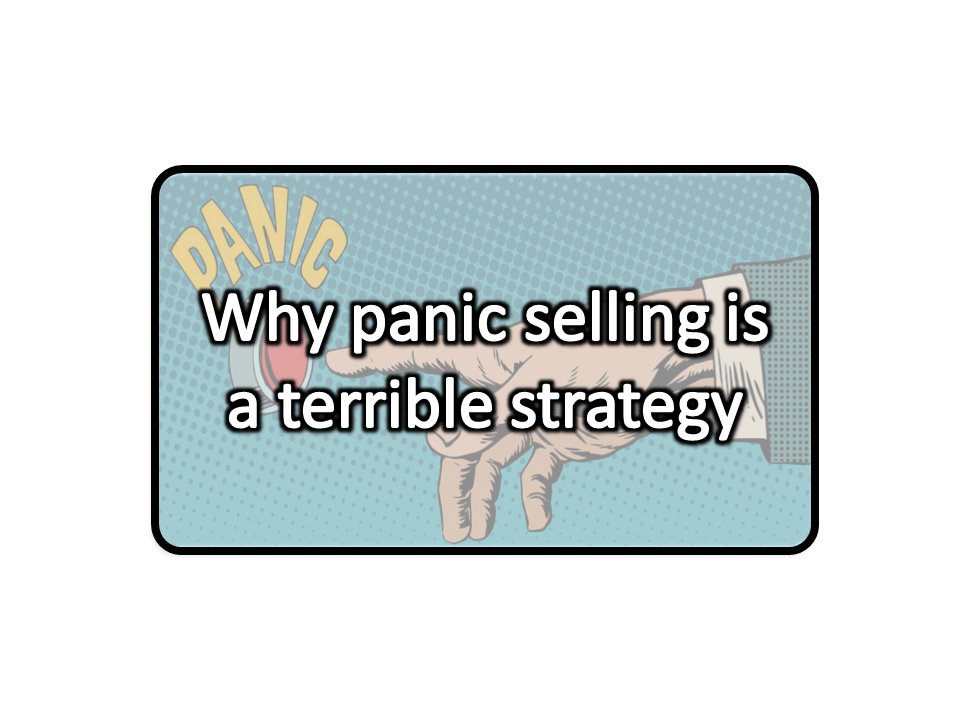There are a few certainties in life – love, death, taxes, and volatility/panic selling in the stock market. Volatility in the stock market can be based on confirmation or certainty. Confirmation aligns with confidence. Confidence in what we’ve done, or chosen, is the right idea… according to ourselves. Similar to your friends compliment you after you’ve bought a new car or an item of clothing. We seek a similar gratification when we buy shares. We want the general public to acknowledge how smart we were for buying Bitcoin, Tesla, or jumping on the latest IPO.
Just like confirmation, certainty plays on our emotions. We want the certainty that what we’ve done is the right thing. After all, why else would you buy shares besides the goal of obtaining money? Certainty ensures that our investments are safe and that we’ve made the right choice.
Now that we can begin to understand the psychology of confirmation and certainty, we need to depict how this impacts our portfolio – specifically volatility. You’ll never forget your first bout of actual volatility in the market. I’m not talking about a 2-3% drop in the major indices or 5-10% drop in shares – I’m referring to actual volatility, where you get a lump in your throat and begin to question yourselves.
It is worth noting that volatility goes both ways. It can go up just as quickly as it goes down. Both scenarios play out in the same way – you see the price jump/drop, you quickly scour the internet as to why, absorb the information and formulate an outcome yourself. You begin to question your strategy. So, should I sell and take profits? Or should I close my trade and minimise my losses. In most cases, you should just turn off your phone/computer and just walk away.
Panic Selling History
If you go back over every major sell-off in history, you’ll notice a common theme. There was always a catalyst. It could be a mix of economic concerns, monetary policy shifts, geopolitical tensions, or some other source of worry that might make people sell their investments and avoid locking in losses. The most recent case was the economic impact as a result of COVID-19. As quickly as the market dropped (and it did drop quickly), it rose above and beyond in such a short time that most investors wouldn’t have noticed if it wasn’t being blasted across reports day in and day out.
The sky is falling. I better close my trades now! Save any profits and all that jazz. We start to think of places to store our money to reduce our losses until the storm blows over before dipping our toes back into the market.
I can’t stress this enough. Panic selling is a terrible strategy. Panic selling is even more apparent if you’ve invested in ETFs, which track many shares rather than individual ones. The risk is reduced as it is spread across many shares rather than just one. So if company A drops 20%, another company might only drop 2%, and others might even post a positive gain – so it does level out to a degree.
If in doubt, zoom out and look at the chart history. Historically after each crash, it does bounce back. The GFC in 2008, dot.com crash, covid, Black Monday all had significant drops, but they eventually came back stronger. As more drops happen in the future, the market evolves and learns, so there could be an instance where we can learn from previous events and minimise the ongoing impact.
Long-term investing
Everyone’s favourite buy and hold Omaha Oracle, Warren Buffett, famously said, “The stock market is designed to transfer money from the Active to the Patient.” This rings very true here as time in the market will trump timing the market. Buying and holding are one of the easiest things to do when trading shares. You buy, then do nothing – holding. Don’t need to check the charts or technical analysis every day because you should already be confident in what you’re buying. You’ve done the research, you’ve trusted your gut, and you bought the shares. Well done, now you just need to exercise patience.
It’s sometimes funny that traders don’t understand the basics of a company expanding and growing. It takes time, sometimes months and years, for it to fully develop. The market price of any share is the net result of the market’s current view. This is where confidence comes into play and not panic selling. It would be best if you assured yourself that you’re correct when trying to zig, whilst everyone zags.
I always like to ask myself if I had the available equity now, would I repurchase this stock? If not, why not? What’s changed, and how does it change my outlook on the company? So, panic selling hurts your portfolio and your confidence. If you genuinely want to sell a stock, you need to have solid reasoning, not just because everyone else told you to. Panic selling is based on emotional trading where you regret it immediately after and act without thinking.
